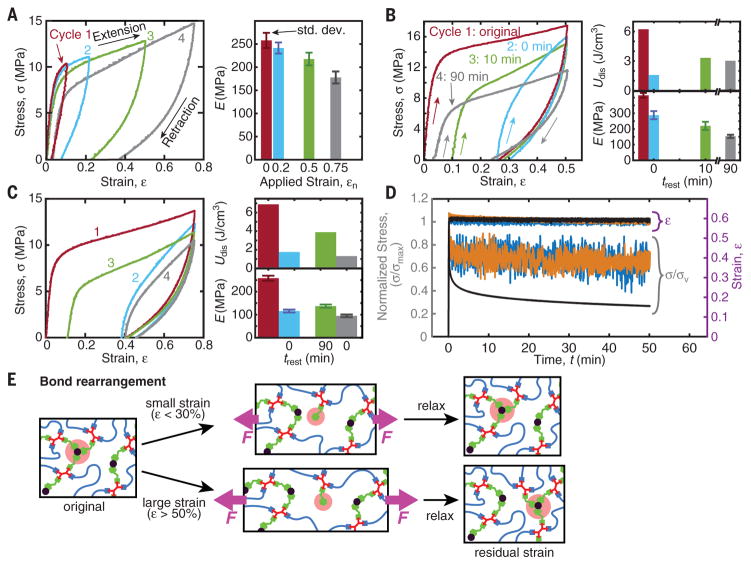Fig. 4. Cyclic tensile tests and stress relaxation of iron-treated networks show hysteresis and mechanical recovery.
(A) Sequential loading-unloading cycles with 30-min rest intervals, trest, show successful recovery of elastic modulus and no residual strain for εn < 50%. (B and C) Strain-history dependence with varying rest intervals. Immediate reloading results in reduced toughness (histogram, top) and stiffness (bottom), but a 10-min rest interval results in 90% strain recovery. Longer resting (90 min) does not result in full strain recovery. Softening occurs possibly due to repeated loading or as a result of exposure to low, ambient relative humidity (19 to 20%) (see fig. S8A). Larger applied strain (C) results in reduced strain recovery (72%). (D) Stress relaxation for protected (blue), deprotected (orange), and iron-treated (black) specimens indicates the fast elastic and slow viscous responses. σmax = 0.2, 0.3, and 19.3 MPa for protected, deprotected, and iron-treated samples, respectively. (E) Proposed mechanism for the strain recovery: At small strains, bonds reform at their original positions; at large strains, bonds migrate further, causing residual strain.

